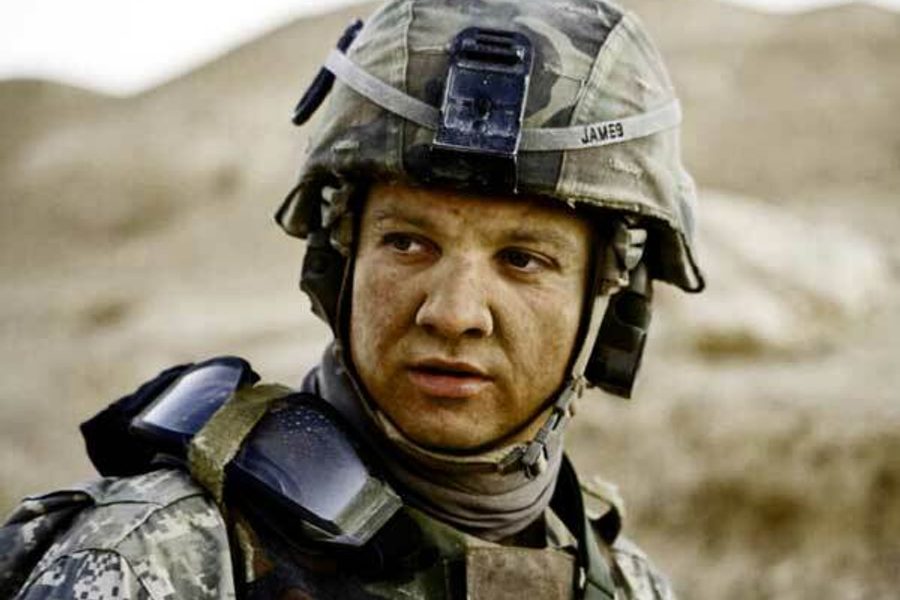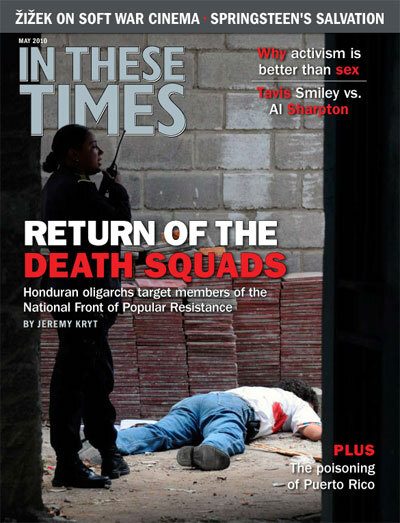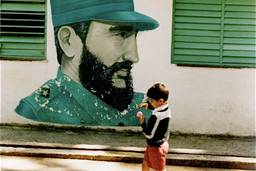
When Kathryn Bigelow’s The Hurt Locker won all the big Oscars over James Cameron’s Avatar, the victory was perceived as a good sign of the state of things in Hollywood: A modest production meant for independent festivals clearly overran a superproduction whose technical brilliance cannot cover up the flat simplicity of its story. Did this mean that Hollywood is not just a blockbuster machine, but still knows how to appreciate marginal creative efforts? Maybe – but that’s a big maybe.
For all its mystifications, Avatar clearly sides with those who oppose the global Military-Industrial Complex, portraying the superpower army as a force of brutal destruction serving big corporate interests. The Hurt Locker, on the other hand, presents the U.S. Army in a way that is much more finely attuned to its own public image in our time of humanitarian interventions and militaristic pacifism.
The film largely ignores the big debate about the U.S. military intervention in Iraq, and instead focuses on the daily ordeals of ordinary soldiers who are forced to deal with danger and destruction. In pseudo-documentary style, it tells the story – or rather, presents a series of vignettes – of an Explosive Ordnance Disposal (EOD) squad and their potentially deadly work of disarming planted bombs. This choice is deeply symptomatic: Although soldiers, they do not kill, but daily risk their lives dismantling terrorist bombs that are destined to kill civilians. Can there be anything more sympathetic to our liberal sensibilities? Are our armies in the ongoing War on Terror (aka The Long War), even when they bomb and destroy, ultimately not just like EOD squads, patiently dismantling terrorist networks in order to make the lives of civilians safer?
But there is more to the film. The Hurt Locker brought to Hollywood the trend that accounts for the success of two recent Israeli films about the 1982 Lebanon war, Ari Folman’s animated documentary Waltz With Bashir and Samuel Maoz’s Lebanon.
Lebanon draws on Maoz’s own memories as a young soldier, rendering the war’s fear and claustrophobia by shooting most of the action from inside a tank. The movie follows four inexperienced soldiers dispatched in a tank to “mop up” enemies in a Lebanese town that has already been bombarded by the Israeli air force. Interviewed at the 2009 Venice Film Festival, Yoav Donat, the actor who plays the soldier Maoz from a quarter of a century ago, said: “This is not a movie that makes you think ‘I’ve just been to a movie.’ This is a movie that makes you feel like you’ve been to war.” In a similar way, Waltz With Bashir, renders the horrors of the 1982 conflict from the point of view of Israeli soldiers.
Maoz said his film is not a condemnation of Israel’s policies, but a personal account of what he went through. “The mistake I made is to call the film Lebanon because the Lebanon War is no different in its essence from any other war and for me any attempt to be political would have flattened the film.” This is ideology at its purest: The re-focus on the perpetrator’s traumatic experience enables us to obliterate the entire ethico-political background of the conflict: What was the Israeli army doing deep in Lebanon? Such a “humanization” thus serves to obfuscate the key point: the need for a ruthless analysis of what we are doing in our political-military activity and what is at stake. Our political-military struggles are not an opaque history that brutally disrupts our intimate personal lives – they are something in which we fully participate.
More generally, such a “humanization” of the soldier (in the direction of the proverbial wisdom “it is human to err”) is a key constituent of the ideological (self-)presentation of the Israeli Defense Forces (IDF). The Israeli media loves to dwell on the imperfections and psychic traumas of Israeli soldiers, presenting them neither as perfect military machines nor as super-human heroes, but as ordinary people who, caught into the traumas of history and warfare, commit errors and can get lost as all normal people can.
For example, in January 2003, the IDF demolished the house of the family of a suspected terrorist. They did it with accentuated kindness, even helping the family to move the furniture out before destroying the house with a bulldozer. A similar incident was reported a little bit earlier in the Israeli press. When an Israeli soldier was searching a Palestinian house for suspects, the mother of the family called her daughter by her name in order to calm her down, and the surprised soldier learned that the frightened girl’s name was the same as his own daughter’s. In a sentimental upsurge, he pulled out his wallet and showed her picture to the Palestinian mother.
It is easy to discern the falsity of such a gesture of empathy: The notion that, in spite of political differences, we are all human beings with the same loves and worries, neutralizes the impact of what the soldier is effectively doing at that moment. The only proper reply of the mother should be to demand that the soldier address this question: “If you really are human like me, why are you doing what you are doing now?” The soldier can then only take refuge in reified duty: “I don’t like it, but these are my orders,” thus avoiding any responsibility for his actions.
The message of such humanization is to emphasize the gap between the person’s complex reality and the role they are forced – against their true nature – to play. “In my family, the military is not genetic,” says one of the interviewed soldiers who is surprised to find himself a career officer, in Claude Lanzmann’s documentary on the IDF, Tsahal.
And this brings us back to The Hurt Locker. Its depiction of the daily horror and traumatic impact of serving in a war zone seems to put it miles apart from sentimental celebrations of the U.S. Army’s humanitarian role, like in John Wayne’s infamous Green Berets. However, we should always bear in mind that the terse-realistic presentation of the absurdities of war in The Hurt Locker obfuscates and thus renders acceptable the fact that its heroes are doing exactly the same job as the heroes of Green Berets. In its very invisibility, ideology is here, more than ever: We are there, with our boys, identifying with their fears and anguishes instead of questioning what they are doing at war in the first place.









